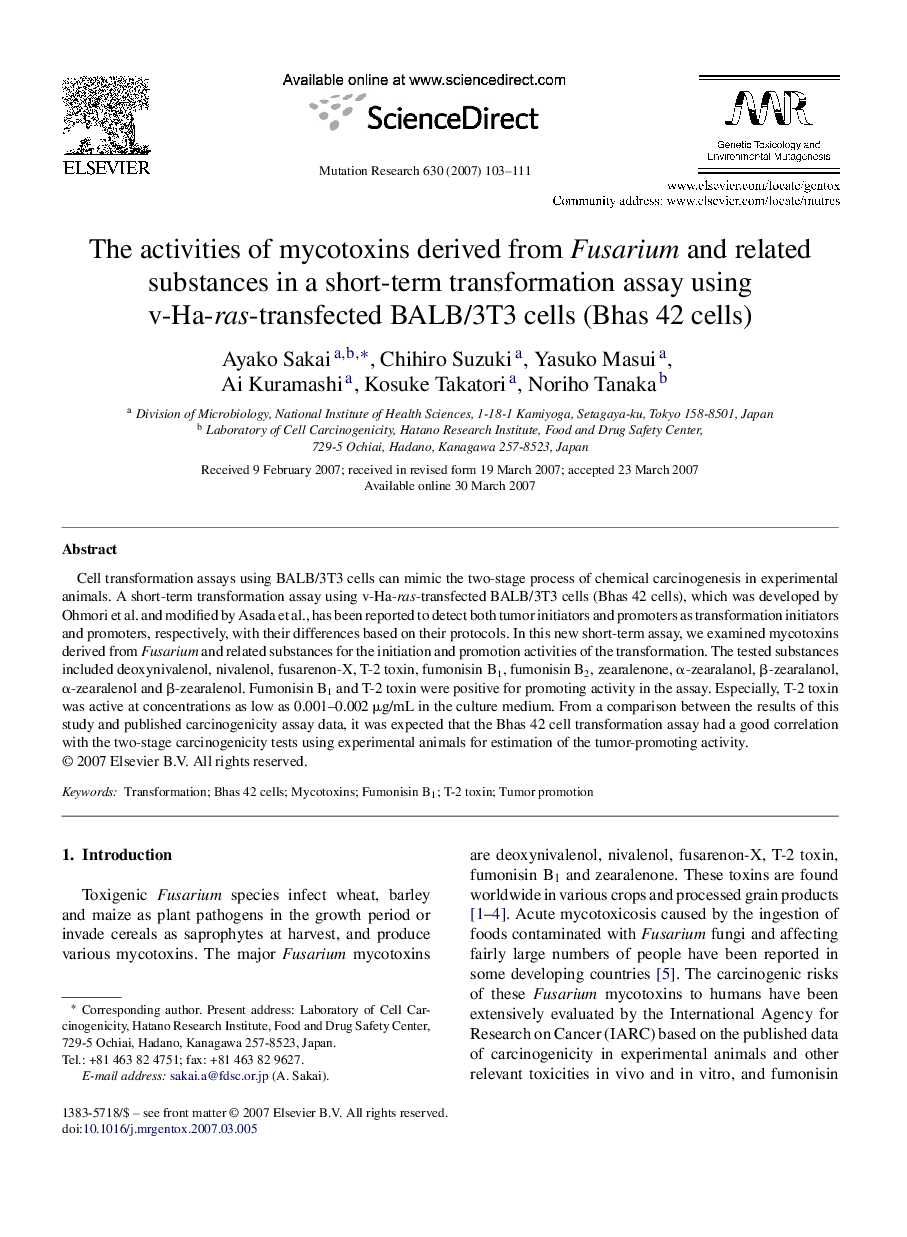| Article ID | Journal | Published Year | Pages | File Type |
|---|---|---|---|---|
| 2149175 | Mutation Research/Genetic Toxicology and Environmental Mutagenesis | 2007 | 9 Pages |
Cell transformation assays using BALB/3T3 cells can mimic the two-stage process of chemical carcinogenesis in experimental animals. A short-term transformation assay using v-Ha-ras-transfected BALB/3T3 cells (Bhas 42 cells), which was developed by Ohmori et al. and modified by Asada et al., has been reported to detect both tumor initiators and promoters as transformation initiators and promoters, respectively, with their differences based on their protocols. In this new short-term assay, we examined mycotoxins derived from Fusarium and related substances for the initiation and promotion activities of the transformation. The tested substances included deoxynivalenol, nivalenol, fusarenon-X, T-2 toxin, fumonisin B1, fumonisin B2, zearalenone, α-zearalanol, β-zearalanol, α-zearalenol and β-zearalenol. Fumonisin B1 and T-2 toxin were positive for promoting activity in the assay. Especially, T-2 toxin was active at concentrations as low as 0.001–0.002 μg/mL in the culture medium. From a comparison between the results of this study and published carcinogenicity assay data, it was expected that the Bhas 42 cell transformation assay had a good correlation with the two-stage carcinogenicity tests using experimental animals for estimation of the tumor-promoting activity.
